#Radio Comics Inc
Explore tagged Tumblr posts
Text

Original Art - Terry And The Pirates Sunday Comic Strip (June16th1968)
Art by George Wunder
News Syndicate Co. Inc.
#Comics#Comic Strips#Terry And The Pirates#George Wunder#Art#Original Art#Vintage#News Syndicate Co Inc#Film#Television#TV#Radio#OTR#Old Time Radio#1968#1960s#60s
9 notes
·
View notes
Text
Comic Ages: Quick Breakdowns for the Golden, Silver, and Bronze Ages
If you're new to comic fandom, or even if you're not, you may hear people talk about specific "Ages" of comic books. If you don't know what that means, or what people mean when they talk about a Golden Age, this is a quick writeup meant to help you out!
This focuses on the Golden Age, the Silver Age, and the Bronze Age of comics. This is a DC focused writeup, though it's loosely applicable to Marvel comics too.
The Golden Age (1938-1950s)
DC Comics as we know it started taking form in 1937 with the debut of the Detective Comics title. Published by Detective Comics Inc. in partnership with National Allied Publications, the title was an anthology of various detective and mystery stories featuring characters such as Slam Bradley. Have you ever read the first dozen or so ‘Tec stories? Because I haven’t. I care much more about what came next. In 1938, All-American Publications began publishing Action Comics, debuting a character called Superman. Maybe you’ve heard of him. Soon after, in 1939, Detective Comics #27debuted the Batman. Arguably with Action Comics #1, though definitely by 1940, the Golden Age of comics had begun.
The original iterations of the Flash and Green Lantern—Jay Garrick and Alan Scott, respectively—were created in 1940. The savvy reader among you might recognize these two as belonging to the Justice Society of America, which had arrived on the scene by 1941. The JSA would be rounded out with Hawkman, Doctor Fate, the Spectre, Sandman, the Atom, and Hourman. Other characters created around this time include Green Arrow (1940), Wonder Woman, (1941), and Aquaman (1941).
You may notice that the Golden Age overlaps with World War II, and it definitely affected DC’s publication. The newly created figure of the superhero became a more starkly patriotic figure, often spangled in red, white and blue. Plots began to incorporate nationalistic themes, and heroes often fought spies, foreign agents, and saboteurs. Arguably, though, scholars argue that the war era was most important for how superheroes began to move out of a purely print medium to radio and film. (For additional reading on DC Comics and WWII, see the Freeman and Hutchens citations below)
As the 40s went on, however, interest in superheroes began to wane, and DC (though technically they weren’t yet a consolidated DC Comics) began to pivot to other themes, such as Western stories or science fiction. The end of the Golden Age, however, can arguably be traced to 1954 with Frederic Wertham publishing Seduction of the Innocent. Wertham’s book that claimed that comics were an active harm to children due to their depictions of violence and supposed (homo)sexual themes. Seduction of the Innocent led to Wertham testifying before a U.S. Senate Subcommittee, which in turn ended up leading to comics publishers adopting the Comics Code Authority, a sort of self-imposed regulatory authority.
I would personally characterize the Golden Age as having a sort of earnestness to it. Characters are being invented left and right, but the writers haven’t yet had enough time with them to shape them into the figures we now know them to be. In hindsight, a lot of these early stories seem... silly… Superman eating a pocket-knife in Superman #8 comes to mind. But even within the same issue as the goofy knife-eating, you see Superman working against foreign agents representing the real-world anxieties of the time.
The Silver Age (1958-1970)
After the establishment of the Comics Code Authority, the content of comics had to change. At the same time, DC Comics (though they still weren’t technically doing official business under that name) had a stable of characters begging for reinvention. In 1956, Barry Allen debuted as the new Flash in Showcase #4, and the Silver Age was off. Science fiction themes seemed to be all the rage for the Silver Age: Hal Jordan, the new Green Lantern, got his ring from a dying alien. Ray Palmer, the new Atom, was described as a genius inventor who created his size changing powers. Hawkman was brought back, no longer as the reincarnating pharaoh Khufu, but as a police officer from the planet Thanagar. The Martian Manhunter was more thoroughly fleshed out and elevated from a detective to superhero. As individual heroes were getting re-tooled, the concept of the Justice Society was updated in 1960 to become the Justice League of America, which debuted in The Brave and the Bold #28.
After establishing refreshed versions of some of their older heroes, DC decided that they wanted to begin to reincorporate some of their older characters into their modern publication. This effort began in 1961 with the spectacular “Flash of Two Worlds” in Flash #123, which featured Barry Allen, the Flash, teaming up with Jay Garrick, the Flash of the Golden Age. This issue established that the Golden Age characters all still existed, but on a parallel Earth that vibrated at a different frequency than the Earth of DC’s main heroes, which was designated Earth One. By using their powers, characters like the Flash were able to vibrate at the other Earth’s speed, crossing over. This concept would soon be expanded upon, leading to frequent crossovers between Earth One and Earth Two characters and teams.
Having two separate Earths, each with their own history, allowed DC to have multiple variations of the same characters, offering greater storytelling breadth. The Bruce Wayne of Earth Two, for example, had retired as Batman to become Gotham Police Commissioner, passing on the torch to his daughter Helena Wayne, the Huntress. Huntress would cross over to meet the Bruce Wayne of Earth One, the younger, childless Batman. DC would develop other Earths, such as Earth Three, with villainous versions of Earth’s heroes, of Earth Prime, with a single Superboy as Earth’s only superhero.
The Silver Age, as a whole, can be looked at as campier than other eras of comics thanks in no small part due to the regulations imposed by the Comics Code Authority. Stories tended towards science fiction and the fantastic, and creators were very interested in making pre-established concepts new again. Comics continued to expand through new mediums, often keeping with the tone of the time: the Adam West Batman TV show, for example, ran 1966-1968 and is a great example of Silver Age camp. While the Silver Age has an event that can be pointed to as a relatively agreeable indication of the era’s beginning, its end is slightly less clear.
The Bronze Age (1970-1986)
The Bronze Age of Comics came about during the 1970s, but it’s not easy to discern exactly when or with what event. Comic readers had been indicating a desire for darker or more mature stories. (In some ways, this desire can be considered as a reaction to the trend of the Silver Age as a whole. For further reading, I suggest The Caped Crusade: Batman and the Rise of Nerd Culture by Glen Weldon, which dives into how Batman media specifically follows a tone-pendulum.)
Some point to the death of Gwen Stacy over in The Amazing Spider-Man as the event that heralded in the Bronze Age, others point to Jack Kirby leaving Marvel to join DC and begin the Fourth World. The Bronze Age was emboldened by the revision and weakening of the Comics Code in 1971, after Stan Lee published a comic about drug use without the Authority’s stamp of approval. The comic was a success, leading the code to reevaluate or be left behind.
In the realm of DC, Green Arrow’s joining the Green Lantern title in 1970 in what would then be Green Lantern/Green Arrow #76 is generally considered a Bronze Age hallmark. The series focused on contemporary social ills, with its arguably most famous story tackling drug addiction in America. 1971’s Green Lantern/Green Arrow #78, “Snowbirds Don’t Fly,” depicted the teen hero Roy Harper's addiction to heroin and the other heroes’ reaction and response. In the Batman comics, Dennis O’Neil and Neal Adams began a long campaign to bring Batman back to a more gothic, brooding figure with appropriately dark villains. O’Neil and Adams’ 1971 Batman #232 debuted Ra’s and Talia al Ghul, while 1973’s Batman #251 would see “The Joker’s Five Way Revenge” take the Joker from his Silver Age clownish portrayal to a more menacing, murderous villain.
As DC Comics approached 50 years of publication in 1985, they began to recognize that five decades had left them with quite a mess of continuity. There were the Golden Age heroes on Earth Two, the Silver Age heroes that had become the Bronze Age heroes on Earth One, and a plethora of alternate Earths and company acquisitions to make it muddier. To mark the anniversary and clean house at the same time, DC embarked upon the Crisis on Infinite Earths.
Crisis on Infinite Earths, often referred to just as “Crisis” was a year-long maxi series running from 1985-1986. The plot involved the destruction of the DC multiverse, and resulted in the establishment of a New Earth with a new continuity. Nearly everything that came before was taken off the metaphorical table, and writers got to choose which pre-Crisis elements to re-canonize and which elements to create fresh.
66 notes
·
View notes
Text
The Ink Demonth 2023 - Day 21. City

Day 21. City Crossover: Samurai Jack Aku is like that one uncle who made his fortune by pure luck (e.g. winning the lottery) and now feels entitled to give life advice to everyone around him on what to do to be as successful as he is, lol.
This is probably one of my best and favourite entries in this year's Ink Demonth.
The funny thing is that I originally had a different idea here - it was supposed to be a crossover with the Spiderverse, where in Spider-Men City one of the Spider-Man (probably Milo) asks Bendy if he's Venom, and Bendy replies that he is, but better because he doesn't need a host. However, I decided that I didn't want to draw the city from this movie, or even so many Spider-Men (although I love both the movie and Spider-Man himself in almost every version) - so Titatotrix and I did a brainstorming session, which resulted in my very discovery: "of course, Aku City... it was supposed to be Aku City from the beginning!" And we got it! I've always wanted to draw Aku. I've drawn Samurai Jack and more, there was even a short comics from my favourite episode... but never Aku. And he is such a lovely object to draw...
I love Samurai Jack. This is probably still my favourite cartoon. And I deeply regret the ending of the last series (the one from Swim Adult). Seriously, I was really sad that so many well-thought-out episodes and the entire complex plot were ruined with one stupid decision at the end... what a shame. I still love the show, and Jack was one of my big crushes (along with Hercules from the 1995 series and Chase Young from Shaolin Showdown and only from Shaolin Showdown - we don't talk about Chronicles). Plus Aku was dubbed in the original by Mako, one of my favourite voice actors (he did Splinter in my favourite TMNT movie and Uncle Iroh in Avatar: The Last Airbender) - may he rest in peace.
While making this picture, I had great fun at every stage: sketching, making lineart, colouring... I would love to continue the theme of "uncle" Aku giving good advice to Bendy, but, unfortunately, I don't have time for that anymore. Maybe I'll come back to it someday. By the way, while coming up with this entry - and it was after linearizing the next one, Radio, which you will see in a few hours - Titatotrix and I came to the conclusion that this year's Ink Demonth in my version looks a bit like Bendy's journey through the Multiverse and asking various characters for advice on how to deal with his perpetual depression (and with Joey). Well, it really looks like that. Plus entries where Sammy does something... sammish X"D
Bendy and the Ink Machine (c) Joey Drew Studios Inc. Samurai Jack (c) Genndy Tartakovsky Sammy and the Ink Machine (c) Nayia Lovecat
#The Ink Demonth#Bendy and the Ink Machine#Sammy and the Ink Machine#BATIM#SATIM#Samurai Jack#Aku#Bendy#Ink Bendy#Ink Demon#love that serial#Nayia recommends#The Ink Demonth 2023#crossover
66 notes
·
View notes
Text

Bob Newhart
US standup and sitcom star who exuded calm assurance in a career that spanned more than 50 years
Bob Newhart, who has died aged 94, employed a deadpan delivery, marked with a sometimes stammering hesitation, that made him an unlikely candidate to become one of America’s most successful comedians. It was in keeping with his character that his successes often went overlooked.
Newhart burst on to the scene with the 1960 release of The Button-Down Mind of Bob Newhart, a recording of his first-ever standup performance just months earlier. It shot to No 1 on record charts, followed six months later by The Button-Down Mind Strikes Back!, which rose to No 2, behind its predecessor. His debut won the 1961 Grammy as album of the year, the sequel won best spoken comedy album, and Newhart was named best new recording artist.
Newhart’s preferred format was the one-sided telephone conversation, where the audience’s understanding of what the speaker cannot see makes Newhart his own straight-man. Abraham Lincoln’s PR man in Washington tries to stop him from changing the Gettysburg Address (“You changed four score and seven to 87? Abe, that’s a grabber!”). An official of the West India Company listens to Walter Raleigh singing the praises of the 80 tonnes of leaves he’s shipping to London (“Then what do you do, Walt? You set fire to it! You inhale the smoke, huh! You know, Walt … it seems you can stand in front of your fireplace and have the same thing going for you!”).
In 1961, Newhart made his debut at Carnegie Hall in New York, appeared in Don Siegel’s war film Hell Is for Heroes (doing a variation of his routine on a walkie-talkie) and starred in his first TV series, The Bob Newhart Show, a variety and comedy sketch show following Perry Como’s Kraft Music Hall on NBC. Though it lasted only one season, it won an Emmy and a Peabody award.
youtube
The key to Newhart’s immediate success was suggested by his “button-down” persona. This was the beginning of President John Kennedy’s “new frontier”, where what the British fashion critic John Taylor demeaned as the “simulated negligence” of the unpadded grey flannel suit signified a certain comfort and style, as well as sober conformity. Newhart’s probing of the accepted everyday was entertaining but sharp; a form of subtle satire.
It was a casual approach that he had refined carefully. Born George Robert in the Chicago suburb of Oak Park, Newhart grew up called “Bob” to distinguish him from his father, George David, who was part-owner of a plumbing and heating business. His mother, Pauline (nee Burns), was a housewife. He attended Catholic schools, and graduated from Loyola University in Chicago with a degree in business management in 1952. After two years in the army working as a clerk, he entered the law school at Loyola, but soon left and began working as an accountant.
In one job, he and a colleague, Ed Gallagher, began recording dialogues in the style of Bob and Ray, an innovative comedy duo. Gallagher left for New York, and Newhart moved to writing ad copy for a Chicago production company, while circulating his own tapes.
Local radio personality Dan Sorkin played some, and Newhart began appearing on local morning TV. Tapes reached the record producer George Avakian, who in 1958 had left Columbia Records to form an equivalent company for Warner Brothers. Avakian wanted to catch Newhart’s standup act immediately; the February 1960 show at the Tidelands Club in Houston – which became his first record – was at the first venue that Newhart’s quickly acquired agent could find to book.
After the success of The Bob Newhart Show, he was immediately busy on the standup circuit. His intelligence and easy-going demeanour made him a popular guest on other talkshows, and eventually he was a regular replacement for Johnny Carson on Tonight. Although he was accused by the comic Shelley Berman of plagiarising the telephone gimmick from him, it had already been a longstanding format used by performers including George Jessel and Arlene Harris. It was his demeanour, knowing but hesitant (which he sometimes said was influenced by George Gobel), that made him such a versatile performer.
youtube
The comic Buddy Hackett introduced Newhart to Ginnie (Virginia) Quinn, the daughter of the character actor Bill Quinn. They married in 1963, and the enduring alliance became a running joke when he appeared with the thrice-wed Carson.
Newhart’s film roles were infrequent but often telling: as Major Major in Mike Nichols’ adaptation of Joseph Heller’s Catch-22 (1970); as Gene Wilder’s pal in the Odd Couple-like TV movie Thursday’s Game (1974); and as Papa Elf alongside Will Ferrell in Elf (2003). He also did voices, notably the rescue mouse Bernard in The Rescuers (1977) and its sequel, The Rescuers Down Under (1990).
Unusually, he starred in two long-running TV series. In The Bob Newhart Show (1972-78) he played a psychologist: the perfect manifestation of his standup routine’s listening and commenting. It grew from an appearance on The Smothers Brothers Comedy Hour, and was produced by Mary Tyler Moore and Grant Tinker’s MTM Productions. With Suzanne Pleshette as his schoolteacher wife and Peter Bonerz as the dentist with whom he shares an office, the show was an immediate hit. As ratings dropped and Newhart tired of it, he at one point refused a script that introduced children. “It’s very funny,” he told the producers. “Who’s going to play Bob?”
He returned in 1982 with Newhart, playing Dick Loudon, a writer who moves with his wife (Mary Frann) to a rural Vermont inn. With a cast including Tom Poston, who would win three Emmy nominations as the eccentric handyman George, Newhart became the centre of a world whose chaos stretched the kind of calm understanding for which he was known.
In 1985, Newhart was diagnosed with a blood disease, polycythemia, caused by smoking. Having made comedy from tobacco and appeared, with Poston, in Norman Lear’s comedy Cold Turkey (1971), where a town tries to win $25m from a tobacco company by quitting smoking for a month, he now quit himself.
As Newhart drew to a close after eight seasons, a classic final episode, which played off the famous “who shot JR?” finale of Dallas. It was kept top secret by the cast and crew. Struck by a golf ball, Newhart wakes up in the Bob Newhart Show bedroom, next to Pleshette, complaining of a crazy dream he’s had about Vermont.
Two more series were less successful. Bob (1992-93) saw him as a cartoonist trying to adjust to a corporate world when a character he created is revived. George and Leo (1997-98) was another Odd Couple-type scenario, in which his bookstore owner shares a flat with his son’s father-in-law (Judd Hirsch), who’s running from the mob. Newhart joked about the title: “We had used every variation of my name; all that was left was ‘The’.”
Newhart’s three-part guest appearance on ER in 2003, where Sherry Stringfield’s Dr Lewis helps Newhart’s suicidal Ben Hollander adjust to his oncoming blindness, earned him his fifth Emmy nomination. He was nominated again in 2009 for a supporting role in The Librarian, but finally won in 2013, playing Arthur Jeffries in the comedy The Big Bang Theory. Jeffries was Professor Proton, host of the science TV series (based on Watch Mr Wizard) watched by the genius Sheldon. He was nominated twice more, and reprised the role three times in Young Sheldon.
Newhart’s lifelong comedic chalk-and-cheese friendship with Don Rickles was the subject of Bob and Don: A Love Story, a short documentary made in 2022 by Judd Apatow.
Ginny died in 2023, and Newhart is survived by his sons, Robert and Timothy, and daughters, Courtney and Jennifer.
🔔 Bob (George Robert) Newhart, comedian and actor, born 5 September 1929; died 18 July 2024
Daily inspiration. Discover more photos at Just for Books…?
11 notes
·
View notes
Text
Timeline
Alright, so, the difficulty I first ran into, is that I could not find an exact timeline for releases of Superman content, so through intensive googling, I managed to make a list of releases up to 1960.
1938 (Comics) Action Comics #1-8
1939 (Comics) Action Comics #9-19 | Superman #1-3
1940 (Comics) Action Comics #20-31 | Superman #4-7 (Radio) The Adventures of Superman "The Baby From Krypton" - "The Nitrate Shipment"
1941 (Comics) Action Comics #32-43 | Superman #7-13 | World's Finest Comics #1-4 (Radio) "Black Pearl of Osiris" - "The Pan-Am Highway" (Film) Fleischer Animated Series 1-2
1942 (Comics) Action Comics #44-55 | Superman #14-19 | World's Finest Comics #5-8 (Film) Fleischer Animated Series 3-13 (Radio) "The Mechanical Man" - The Mystery Ship" (Novel) Adventures of Superman by George Lowther
1943 (Comics) Action Comics #56-67 | Superman #20-25 | World's Finest Comics #9-12 (Film) Fleischer Animated Series 14-17 (Radio) ""The Tin Men" - "Stolen War Information"
1944 (Comics) Action Comics #56-79 | Superman #26-31 | World's Finest Comics #13-16 (Radio) "Lois and Jimmy Disappear" - "The Man in the Velvet Shoes"
1945 (Comics) Action Comics #80-91 | Superman #32-37 | More Fun Comics #101 | World's Finest Comics #17-20 (Radio) "The Mystery of the Sleeping Beauty" - "Looking for Kryptonite"
1946 (Comics) Action Comics #92-103 | Superman #38-43 | World's Finest Comics #21-24 (Radio) "The Talking Cat" - "The Phony Restaurant Racket" "Clan of the Fiery Cross"
1947 (Comics) Action Comics #104-115 | Superman #44-49 | World's Finest Comics #25-28 (Radio) "The Phony Inheritance Racket" - "Pennies for Plunder"
1948 (Comics) Action Comics #116-127 | Superman #50-55 | World's Finest Comics #29-32 (Film) Superman Serial (Columbia Pictures starring Kirk Alyn) (Radio) "Hunger Inc." - Superman's Secret"
1949 (Comics) Action Comics #128-139 | Superman #56-61 | Superboy #1-5 | World's Finest Comics #33-37 (Film) Keep Your School All-American (Radio) "The Return of the Octopus" - "Diamond of Death"
1950 (Comics) Action Comics #140-151 | Superman #62-67 | Superboy #6-11 | World's Finest Comics #38-49 (Film) Atom Man vs. Superman (Kirk Alyn)
1951 (Comics) Action Comics #152-163 | Superman #68-73 | Superboy #12-17 | World's Finest Comics #50- (Film) Superman and the Mole Men (George Reeves)
1952 (Comics) Action Comics #163-175 | Superman #74-79 | Superboy #18-23 | World's Finest Comics # (TV) Adventures of Superman (George Reeves) Season 1
1953 (Comics) Action Comics #176-187 | Superman #80-85 | Superboy #24-29 | World's Finest Comics # (Film) Adventures of Superman (George Reeves) Season 2
1954 (Comics) Action Comics #187-199 | Superman #86-93 | Superboy #30-37 | World's Finest Comics (Film) Stamp Day for Superman
1955 (Comics) Action Comics #200-211 | Superman #94-101 | Superboy #38-45 (Film) Adventures of Superman (George Reeves) Season 3
1956 (Comics) Action Comics #212-223 | Superman #102-109 | Superboy #46-53 (Film) Adventures of Superman (George Reeves) Season 4
1957 (Comics) Action Comics #224-235 | Superman #110-117 | Superboy #54-61 (Film) Adventures of Superman (George Reeves) Season 5
1958 (Comics) Action Comics #236-247 | Superman #118-125 | Superboy #62-69 (Film) Adventures of Superman (George Reeves) Season 6
1959 (Comics) Action Comics #248-259 | Superman #126-133 | Superboy #70-77 (Film) George Reeve's death.
1960 (Comics) Action Comics #260-271 | Superman #134-141 | Superboy #78-85 (Film) Superman (Mohammed Hussain)
However, upon joining the Superman subreddit Discord, I was kindly referred to this link on the Superman Supersite:
Which, heh, could have saved me some time. tbh.
3 notes
·
View notes
Text

MAX FLEISCHER’S SUPERMAN 1941-1943
Warner Bros. Discovery has meticulously remastered Max Fleischer’s treasured set of 17 animated Superman shorts from the original 35mm source elements. Max Fleischer’s Superman 1941-1943 will be available to purchase Digitally on HD and on Blu-ray May 16, 2023.
Superman made his comic book debut in 1938, appearing in Action Comics #1 (dated June 1938, but officially published on April 18, 1938), and the Man of Steel’s popularity grew with his subsequent radio program. Max Fleischer gave the world’s first Super Hero his initial animated spotlight, producing 17 theatrical animated shorts from September 1941 to July 1943 that further elevated the character’s profile, and added many significant aspects to his canon – including coining many of Superman’s patented catchphrases and attributes.
Warner Bros. Discovery’s advanced remastering process began with a 4K, 16-bit scan of Fleischer’s original 35mm successive exposure negative. Staying true to the original theatrical aspect ratio of 1.37-to-1, the highest quality raw image was then scanned and then entered into the recombine process – utilizing special proprietary software to merge the successive exposure Technicolor negatives into a single RGB color image. The end result are pristine animated shorts that have been restored to the animators’ originally intended production quality.
Well known radio actors Clayton “Bud” Collyer and Joan Alexander reprised their famed The Adventures of Superman radio show roles for the Fleischer/Famous Studios animated shorts as Superman/ Clark Kent and Lois Lane, respectively. Jackson Beck provided the voice of Perry White and the show’s primary narrator. Additional voices, many of whom had participated in the Superman radio program, were provided by Jack Mercer, Grant Richards, Julian Noa, Lee Royce, Max Smith, Sam Parker and Carl Meyer.
Max Fleischer’s Superman 1941-1943 will be available on May 16, 2023 to purchase Digitally in HD from Amazon Prime Video, AppleTV, Google Play, Vudu and more, and on Blu-ray at major retailers both online and in-store.
EPISODES (AND PREMIERE DATE):
Superman (Mad Scientist) – 9/26/1941
The Mechanical Monsters – 11/28/1941
Billion Dollar Limited – 1/9/1942
Arctic Giant – 2/27/1942
The Bulleteers – 3/27/1942
The Magnetic Telescope – 4/24/1942
Electric Earthquake – 5/15/1942
Volcano – 7/10/1942
Terror on the Midway – 8/28/1942
The Japoteurs – 9/18/1942
Showdown – 10/16/1942
The Eleventh Hour – 11/20/1942
Destruction, Inc. – 12/25/1942
The Mummy Strikes – 2/19/1943
Jungle Drums – 3/26/1943
Underground World – 6/18/1943
Secret Agent – 7/30/1943
SPECIAL FEATURES INCLUDE:
New Featurette – Superman: Speeding Toward Tomorrow – Superman’s exploits in the Fleischer series modernized the monomyth of the Greek godlike hero and expanded and romanticized the prevalent themes of sci-fi and fantasy. It was this combination of heartfelt storytelling, relatable heroes and amazing visuals that has endeared the Fleischer series to fans as one of the greatest superhero stories of all time. This featurette explores the visual storytelling as the lavish animation, with special attention paid to all the atomic age technology, pushes science fiction closer to becoming a powerful social and pop culture force.
Featurette – First Flight: The Fleischer Superman Series – The Origins and Influence of This Groundbreaking Cartoon Series – A gathering of contemporary animators, comic book & animation historians, and legendary Fleischer artists examine these beloved shorts, focusing on the animation and the breakthrough techniques that created it, as well as studying the title character’s place in history.
Featurette – The Man, the Myth, Superman: Exploring the Tradition of Superman Heroes on the Page and Screen – A fascinating study of Superman-esque characters throughout history – in ancient myth, literature and film – that bring forth imaginative, super-human qualities, captivating audiences and enduring the test of time.
Languages: English
Subtitles: English, French
Running Time: 145 minutes
Preorder: Max Fleischer’s Superman 1941-1943 will be available to purchase Digitally on HD and on Blu-ray May 16, 2023.
Preorder here.

17 notes
·
View notes
Text
Batfam Fancast Part 15: Birds of Prey
Barbara Gordon's close friends and personal squad of vigilantes, this group of mostly women are the premiere team when its comes to kicking ass and taking names. Similar to Charlie's Angels,Barbara as Oracle commanded the team to stop crime of all types. We'll be fancasting Black Canary, Huntress,Batwoman, and Lady Blackhawk.
Quick Recap we have Jane Levy as Barbara Gordon , Natasha Liu Bordizzo as Cassandra Cain, and Jacqueline Scislowski as Stephanie Brown.

While Cass and Steph are techinically not part of the Birds of Prey it would make sense to bring them into the fold. Allowing for extra character interactions. The fact is that these young women would have other more experienced women in their field to help teach them, especially if your mentor works with them often.
Huntress
Helena is the super serious badass of the group compared to the level headed Dinah and comedy relief of Zinda. As time goes on she learns to play nice and even appreciate being part of the team.
Just like my post about Jason its time to finalize my choice for Helena Bertenelli. Surprisingly neither of my original choices have been chosen. From Suzie Crabgrass in Ned's Declassified School Survival Guide to Rosita in The Walking Dead Christian Serratos has been all over the spectrum of television. The 32 year old actress has done it all and seen it all. Drama, action, horror, comedy, even sparkly vampires. Her experience and skill as an actress has Huntress written all over her.

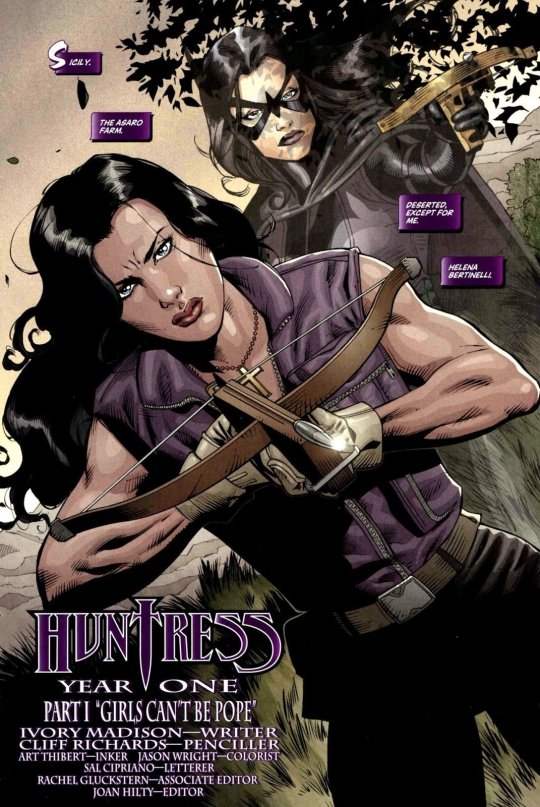
Lady Blackhawk
Now we are getting into the lore that I bet not even most comicbook gurus would remember. The Blackhawks are a World War II era organization consisting of the world's greatest aviators fighting the Axis Powers along with other superpowered threats. (Now read this section in a 1930s radio voice)
Due to some time displaced shit during a mission Zinda Blake known as Lady Blackhawk finds herself in the modern world. Needing to adjust and find herself she joins the Birds of Prey, even suggesting to Barbara to call the team that. An ace pilot and sharpshooter, she does most if the pilot work for the Birds. Zinda can also hold her own in a fight hand to hand.
She plays a key role as the cooler of the group,as well as order beer in 30 languages, a woman after my heart. Honestly she's just a sassy and cooler MCU Bucky Barnes when you think about it. While everyone else is doing Kung Fu she will Kung Fu your face with a shotgun blast. Rambunctious and Brave , just like her time in the military she is a ride or die for her friends.
To really fit into this vigilante group, I questioned whether to keep her as a time displaced character or as a completely new character. Instead of her being a World War II era Aviator, instead becomes a descendant of the famous pilots. The idea in general is for the Blackhawks to still be a major paramilitary organization, working independently from any government or superpower. In the comics the Blackhawks become a international shipping company kniwns as Blackhawks inc. which she owns 1/8 of the company. I like to combined that idea with the paramilitary idea. Blackhawks inc. is a front for the Blackhawks organization to work internationally without any interruptions.
So the idea goes that Zinda is the youngest pilot and most talented agent of their organization, she inherited her stake in the company from her grandfather, a former Blackhawk, as well as her father a former Naval pilot. A former Air Force veteran herself she struggled with the restrictions and weight the company and her family name brought and soon found herself isolated socially from her more older agents. This isolation eventually led her to be recruited into the Bird of Prey which metaphorically allowed her to spread her wings.
"Great googly moogly Batman! He's typecasting!" Indeed I am! Ironically another actor in this franchise was typecasting for another Aviator centered film. From the Good Cop, and her breakout role in Top Gun Maverick Monica Barbaro is absolutely perfect for this role. Already working crime procedural comedy and the action masterpiece that is the Top Gun sequel she fits this role like a glove.

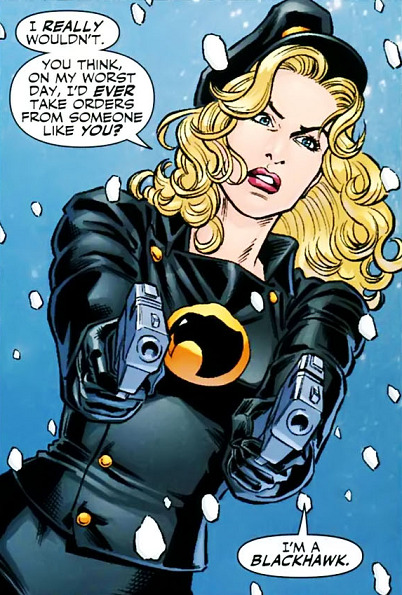
Batwoman
From character assassinations, terrible story arcs, all around butchering of character concept and continuity, The New 52 might have temporarily increased Comic Book Sales, however it butchered and outright erased multiple popular comic book characters. Though through all the thick and thin of terrible writing was small group of characters that were able to get great stories out of that terrible era. Kate Kane aka Batwoman are one of the first major LGBT+ character in DC and flourished during the New 52.
Daughter to Colonel Jacob Kane and cousin to Bruce Wayne her life was changed when her twin sister and mother were kidnapped, when her father raided the area her mother was killed and sister supposedly killed and was never found. Leaning on her father now more than ever she found herself seeking career in the US Army. She eventually made it to West Point as an incoming freshman. Sadly an anonymous tip accused her of homosexual conduct, her commanding officer asked her to disavow the claim, but as a woman of honor and to uphold the Honor Code of the Academy she will not lie. This sadly forced her out of West Point. While her father was supportive of her coming out, the action of her being forced out a West Point led her to a heavy partying lifestyle when she went to college. Later she defends herself against a mugger and encounters Batman. Inspired by the event she trains with her father and eventually becomes Batwoman.
I felt a need to talk about this character due to the fact that the CW's Batwoman is not the best representation of the character. Feeling too much like another Batman ripoff then the genuine original character from the comics.
In the Birds of Prey I designate her as the team Bruiser. While she is technically the least experienced of all the vigilantes she's willing to throw hands with anybody and everybody. Sort of the opposite of Batman and showing how the Birds and Batgirls the more experienced heros. Think Matt Damon in Ocean's 11,a bit if a rookie but definitely can stand with the big leagues.
For Kate Kane I needed someone with a chip on their shoulder, something to prove. Evan Rachel Wood was my only choice for this role. As the lead in Westworld and a whole laundry list of television and movie roles she feels like the perfect candidate for this Gotham defender.
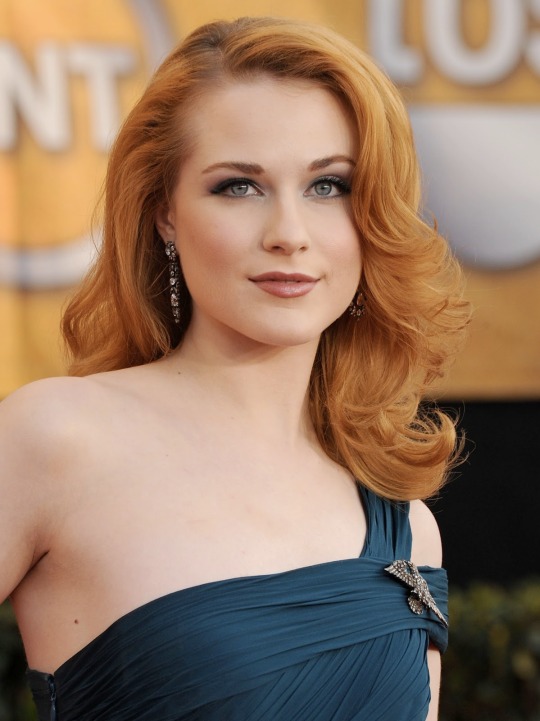
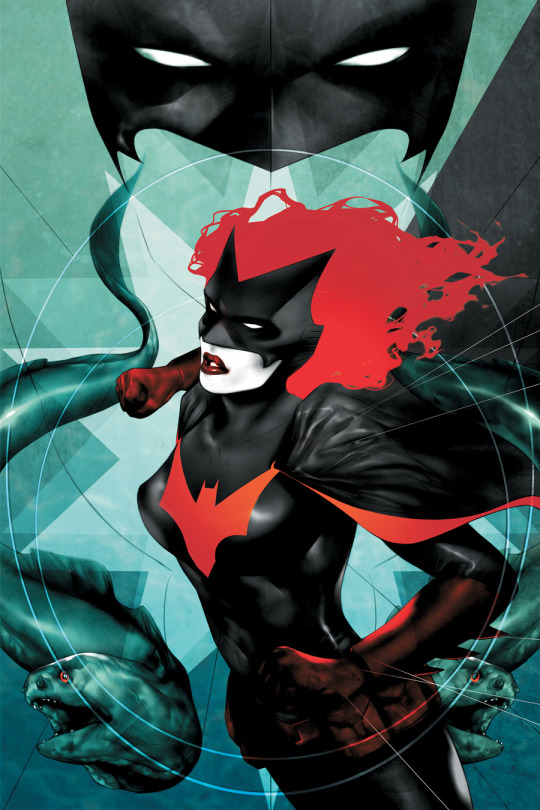
Black Canary
While Oracle commands the Birds of Prey, the weight of leading the team out in the field goes to Black Canary aka Dinah Lance.Cunning and commanding,she is a skilled fighter that can keep up with the likes of Batman and impress the likes of Lady Shiva who wishes to challange her. But while she is a great hero her origin story are as various and muddled as her Arrowverse portrayal. There is Dinah Drake the original WW2 era Justice Society member, Dinah Laurel Lance Daughter of Dinah (Now pronounced Diana) Drake-Lance member of the Justice League and New 52 Dinah Drake- Lance? Experiment turned government led Leader of Team 7 and divorced punk rock star? Then in Rebirth reverts the origin to its original but her and Slade still team up for some reason? Its all confusing so I'm just going to fuse it into a cohesive story.
Dinah Laurel Lance (Die-Nah) is the granddaughter of Dinah Drake-Lance (Diana) a meta human and the first Black Canary or just Canary, Dinah Drake is a founding member of the Justice Society. Years later after the JS disbandment due to government mandates she is recruited into a government lead Black Ops team known as Team 7. Other well known team members are a young Slade Wilson and future husband Kurt Lance. She retires and divorces Kurt Lance and lives a quiet life as a singer she dreamed to be, afterward having a daughter Diana Lance (Yes I'll confuse you even more) and granddaughter Dinah.
Decades later Dinah Laurel Lance grows up and develops the same metahuman abilities and has to train under her grandmother. Dinah Drake dies of cancer and Dinah at 17 is inspired to go into music creating a punk rock band known as the "The Canaries". The band never hits it big and disbands but has a cult following. This to the fact the masked lead singer dubbed the "Black Canary" was seen fighting crime whenever they were on tour. During her time in the band she was also presuing a degree in psychology eventually earning her degree at 27 (Added some Young Justice lore).
She moves to Star City and develops a romantic relationship with Green Arrow, Oliver Queen. While their love was about 4 years strong they have a falling out when she learned how Oliver treated their ward Roy Harper when they learned he was a drug addict. With Roy leaving after that she breaks up with Ollie and eventually found herself in Gotham meeting Barbara as Batgirl. They become close friends to the point where when Barbara becomes paralyzed she's there to help her recover. A year and repaired Ollie relationship later, Barbara now Oracle creates the Birds of Prey and recruit Dinah as her first member and team leader.
I could have easily gone with the obvious actors for this role, Winnick a popular fancast or even stay with Smollet. But I'm going in a different direction.I didn't want to go with that really well-known actress and wanted someone to really bring in that brawler aesthetic that Black Canary brings. Jessica McNamee is an Austrailian actress best known in America for the USA Network show Sirens or more recently as Sonya Blade in the Mortal Kombat 2021 movie. The very movie where she had to keep up with likes of Lewis Tan, Max Huang and Ludi Lin. While the action was not the best the potential is there, she had a amazing rough fight scene against Kano that really emphazied her toughness. I have the confidence to say this Aussie actor has the potential for this bird.


#batman#batfamily#batfam#fancast#batman fancast#birds of prey#black canary#dinah lance#zinda blake#lady blackhawk#huntress#helena bertinelli#batwoman#kate kane#oracle#barbara gordon#batgirl#batgirls#spoiler#stephanie brown#black bat#orphan#cassandra cain#dinah drake#dinah laurel lance#jessica mcnamee#evan rachel wood#monica barbaro#christian serratos#jane levy
7 notes
·
View notes
Text
PLAYING POST OFFICE
Lucille Ball and the Mail

Lucille Ball gets the mail at the end of the driveway to her Chatsworth home, Desilu Ranch, circa 1940s.
“Lady, we don’t mind the rain, or the snow, or the sleet. It’s kooks like you that drive us nuts!” ~ Postmaster, “Lucy & The Missing Stamp” (1964)

In 1943, Lucille Ball performed on the radio program “Mail Call,” a show only available to the troops overseas and not broadcast stateside.The term mail call was used when soldiers would get letters from home.
“My Favorite Husband” (1948-1951)
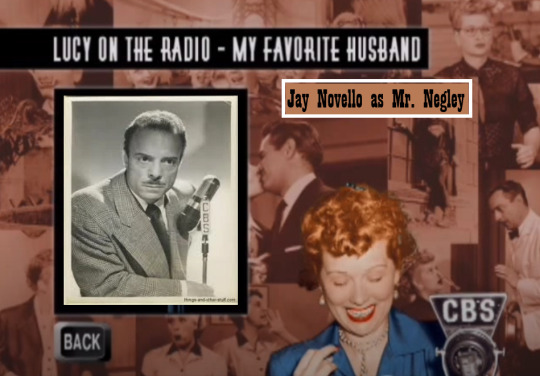
Jay Novello played Mr. Negley the mailman on several episodes of Lucille Ball’s radio series.
In “The Sleigh Ride” (1949) Mr. Negley uses his mail delivery motorcycle to pull the holiday sleigh, but the load proves to much and the milkman’s old horse is pressed into service instead.
In “Liz The Matchmaker” (1949) Katie the maid decides that after three years of dating Mr. Negley that their relationship is not going anywhere, so she enlists Liz’s help.

In “Mother-in-Law” (1949), Liz (Lucille Ball) correctly assumes that Katie the maid (Ruth Perrot) is so happy because Mr. Negley the mailman has flirted with her. Katie says they were “playing post office.”
KATIE: “He’s so creative. He said my mouth was like a postage stamp. Then he canceled me!”
Katie hands her the mail and Liz finds a letter from her mother-in-law.
LIZ: “No one else addresses a letter ‘To George Cooper Only’ marked personal all over and then seals it with Scotch tape!”

“George Attends a Teenage Dance” (1948) ~ George and Liz chaperone a high school dance and we learn that ‘playing post office’ is a game, not just an institution. Post Office is a kissing party game played at teenage parties. It has been referred to in popular culture since at least the 1880s. The group playing is divided into two groups. One group goes into another room which is called "the post office”. To play, each person from the outer group individually visits “the post office”. Once there, they get a kiss from everyone in the room. They then return to the original room.

The game of Post Office is mentioned again in “George Needs A Raise” (1949). In "The Charm School" (1954), Ethel mentions that Fred suggested they play Post Office the previous night when a beautiful guest arrived at their dinner party. In “Kiddie Parties Inc.” (1963) Vivian says she played Post Office when she was younger.
JIMMY: “Do you know how to play Post Office, Mrs. Cugat?” LIZ: “Know how? When I was your age they used to call me Jim Farley.”
James Farley was the the 53rd US Postmaster General from 1933 to 1940.
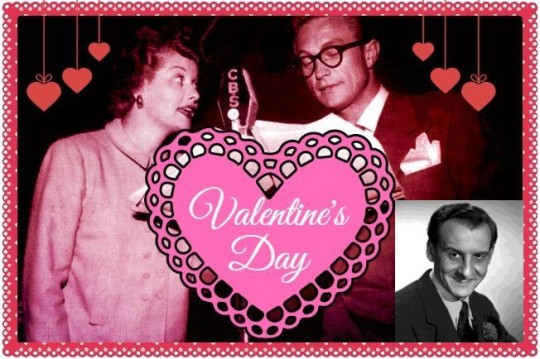
Hans Conried played a weary mailman in “Valentine’s Day” (1949).
LIZ: “Are you picking up the mail?”
MAILMAN (sarcastically): “No, I’m a Confederate soldier and these are messages for General Lee.”
In 1949, General Robert E. Lee’s face was on a postage stamp commemorating the 200th anniversary of Washington and Lee University in Lexington, Virginia.
"I Love Lucy” (1951-1960)

“Drafted” (1951) ~ A letter from Fort Dix makes Lucy and Ethel think that Fred and Ricky have been drafted. The flap of the envelope is open, so Lucy reasons it is okay to read Ricky’s mail. Re-sealing Ricky’s letter from Fort Dix, Ethel says “I’ve had lots of practice at this.”
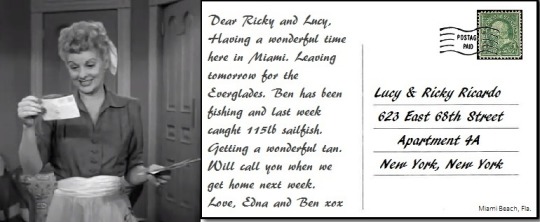
Early in the episode, Lucy gets a postcard from the Bishers, who are on vacation in Florida. The comedy trope of the landlord / landlady (Ethel) reading the tenants’ mail to keep up on gossip is used here!

The premise of a letter from the Draft Board will be used again on “The Lucy Show” in 1966, when Lou C. Carmichael is mistakenly called up.

Unmailed and unfinished love letters to a former boyfriend haunt Lucy in “Lucy Changes Her Mind” (1953). When Ricky insists she finish everything she starts, she finishes the love letter to Tom Henderson and it mistakenly gets mailed!
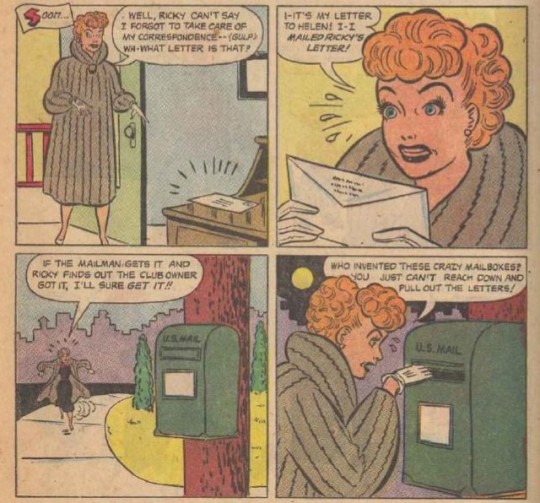
The “I Love Lucy” Comics created a similar storyline for an issue in 1954.

Mailed postcards once again cause trouble in “Fan Magazine Interview” (1954) when a publicity scheme for the Tropicana maquerades as a ‘date’ with Ricky Ricardo. When Lucy finds one of the postcards, she naturally thinks Ricky is cheating! She tracks down the woman: Minnie Finch (Kathryn Card).

Turns out Minnie’s neighbors (Elvia Allman and Sunny Boyne) got similar invitations for ‘dates’ in the mail.

“The Passports” (1955) ~ Lucy has trouble proving where and when she was born. At the end, Lucy gets a letter from her mother enclosing her birth certificate and saving the day.
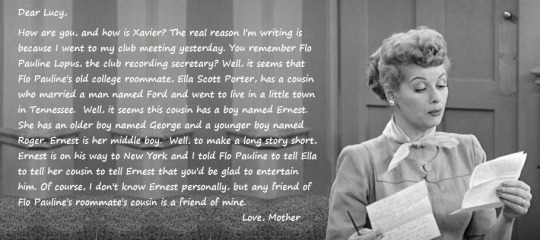
“Tennessee Ernie Visits” (1954) ~ Lucy gets a very wordy letter from her mother to explain the presence of Ernie Ford. Naturally the letter comes after Ernie has arrived.

“Tennessee Ernie Hangs On” (1954) ~ Lucy discovers an unmailed letter from Ernie to his Ma in Bent Fork, causing Lucy and Ricky to feel guilty for scheming to get rid of him.
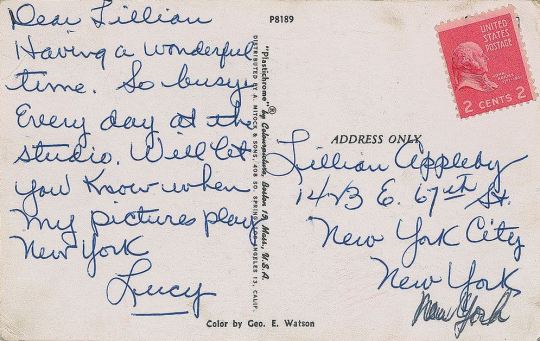

“Lucy Gets into Pictures” (1955) ~ Ricky discovers a postcard Lucy’s written to Lillian Appleby, fibbing about having a part in a picture. In a rare blooper, Ricky calls Mrs. Appleby Lillian instead of Carolyn. She was only named Lillian in her very first appearance.
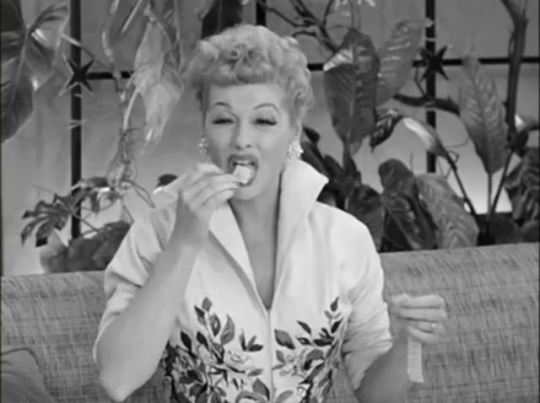
To apply the stamp, Lucy borrows Ricky’s tongue.
LUCY: “I've stamped so many cards, I'm all out of lick. Now, remember, don't read them.” RICKY: “Why not?” LUCY: “Because it's not nice to read other people's postcards.” RICKY: “Well, you and Ethel do it at home all the time.” LUCY: “Not until after they're mailed. It's illegal to read them before they're postmarked.”

“Don Juan is Shelved” (1955) ~ To save Ricky’s picture, Lucy decides to flood the studio with fan mail. She organizes an assembly line in her hotel room to churn out 500 handwritten and stamped fan letters.

“Paris at Last!” (1956) ~ Lucy goes to the American Express Office to change some money into Francs. Fred is in charge of collecting the mail, which has been forwarded to the American Express Offices along their tour route.

Although primarily known for their credit cards today, in the 1950s American Express was an international banking company that issued travelers checks and was a trusted source of currency exchange. Their international offices were equipped with reading and writing rooms which offered the latest American newspapers and magazines. They also maintained a post office where clients’ letters could be forwarded.

“Return Home from Europe” (1956) ~ Packing to sail home, a surprise in the mail changes their plans.
RICKY: “Hey, did they have any mail for us at American 'Spress?” LUCY: “Oh, yes, I almost forgot. Oh, a letter from Mother! Here's a telegram for you.” RICKY: “How do you like that? A telegram and she forwards it in the regular mail. It takes three weeks to get here!”
It turns out to be very important - an offer to play at the Roxy in New York - staring immediately!

“Lucy Raises Chickens” (1957) ~ After placing an ad for someone to help with the egg business, Ricky finds a reply in the mailbox - from Fred!. He put the letter in the box himself, saving the cost of a stamp and replacing it with an Easter Seal!
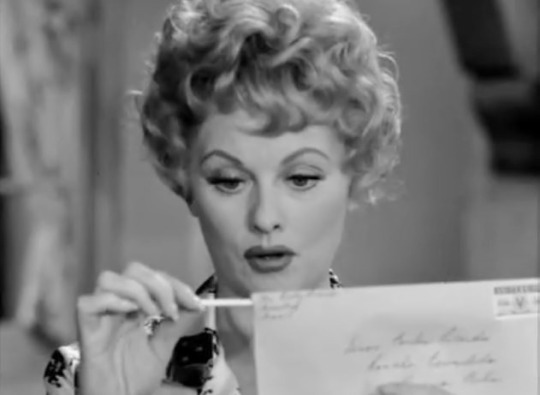
“Lucy Meets the Mustache” (1959) ~ Lucy opens a letter from Ricky’s Uncle Alberto in Cuba, then must figure out a way to get it back into the envelope before Ricky comes home! She employs a knitting needle using a technique she saw on television.
STAMPS

MAILBOXES

“The Lucy Show” (1962-1968)

“Lucy and the Missing Stamp” (1964) ~ Lucy mistakenly uses a collectible stamp on an envelope she’s mailed then realizes its value.
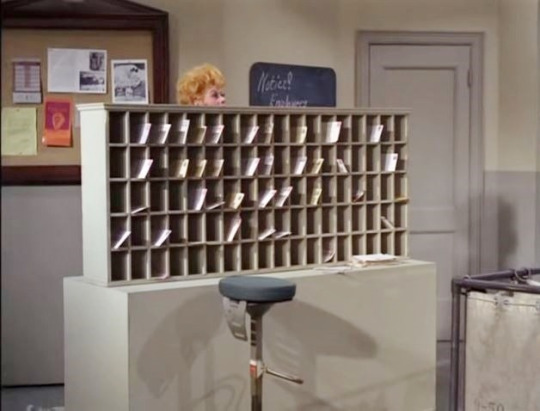
She tracks it to the post office where she does everything she can to retrieve it.

Herb Vigran plays the postman. Robert S. Carson plays the postmaster.
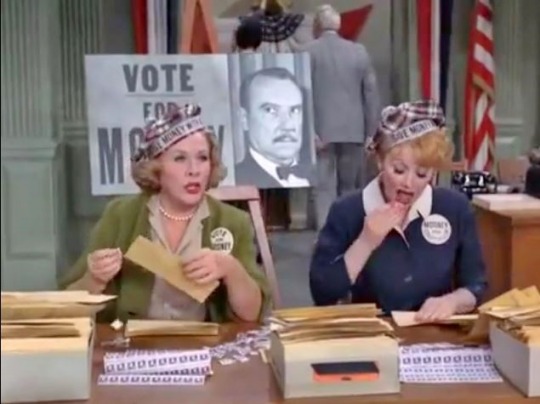
“Lucy Goes Into Politics” (1964) ~ As volunteers working on Mr. Mooney’s campaign for Danfield Comptroller, Lucy and Viv are in charge of stamping hundreds of envelopes!
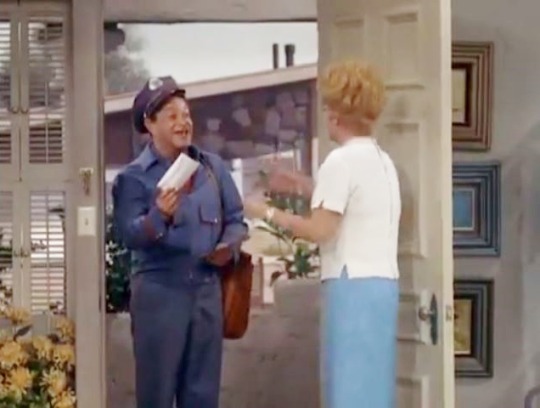
“Lucy Gets Caught Up in the Draft” (1966) ~ The mail that contains her draft notice is delievered by Joe the Postman (Sid Gould).

Also in the mail is a letter from Lucy’s son, who is away at Military School. In probably the largest blooper in the history of “The Lucy Show,” the letter is signed “Jimmy Carmichael” instead of “Jerry Carmichael”. It was Lucille Ball who insisted to the production people that it was Jimmy, remembering the actor’s name (Jimmy Garrett) and not the character’s!

“Lucy the Bean Queen” (1966) ~ At the office, Mr. Mooney notes that it costs five cents postage to send a letter. This rate went into effect in 1963, rising a penny, and went up again another penny in 1968.
“Here’s Lucy” (1968-1974)

“Lucy’s Working Daughter” (1968) ~ When Kim must have her social security number to get a job at a boutique, Lucy confuses it for the Zip Code! The US Post Office introduced Zip Codes on July 1, 1963.

“Lucy Protects Her Job” (1969) ~ Kim disguises herself as new secretary - gum-chewing Shirley Shoppenhauer. She returns from the post office with 500 postage stamps. Unfortunately for Harry, they are all balled up in a bunch and jammed into her purse.

“Lucy and Lawrence Welk” (1970) ~ Lucy gets a letter from her old friend Viv, saying that she’s coming to visit. Naturally, the letter arrives moments before Viv walks through the door!
#Lucille Ball#Post Office#Stamps#Letters#Postcards#Mail#Mailbox#Post#Postal Worker#Mailman#My Favorite Husband#I Love Lucy#Here's Lucy#The Lucy Show#Sid Gould#Vivian Vance#Gale Gordon#Lucie Arnaz#Her Vigran#Robert S. Carson#Jay Novello#Hans Conried#Richard Denning#TV#Radio#Desi Arnaz#Jimmy Garrett#Carol Burnett#Elvia Allman#Sunny Boyne
3 notes
·
View notes
Text
002 - Lecture: Introduction to Krakoa

Welcome Back Students! For today's lecture, your esteemed professors take a deep dive into a seminal text of The X-Men and a foundational reading of this podcast: Jonathan Hickman's 2019 dual-comic series House of X/Powers of X.
Topics in this episode include: How this comic plays with both the form and content of a superhero story, Moira McTaggert's lives and how this was the most radical change Hickman made, mutantkind as community, transhumanism, why we love this book so much to the point it makes us cry, and and more!
Content Warning: This episode contains discussions of genocide.
You can follow Mutant Studies 101 on Twitter @Mutant101Pod and on Instagram @MutantStudies101 and Morgan @beakerbarnes
Special Thanks to Ollie (@olliephresh) for providing our theme music and Hayden (@mcuwaititi) for our graphic design work.
Transcript
Sources:
Hickman, Johnathan, et al. House of X/Powers of X. Marvel Worldwide, Inc. 2020
Alana Levin, X-Men: The Fall of X w/ Spencer Ackerman and Kaetun Khlynne. Graphic Policy Radio. 2024
McCloud, Scott. Understanding Comics: The Invisible Art. Harper Perennial, 2010
Tarot Card Meanings List



0 notes
Text
Ghostsf*%kers review
We have a Blitzo and Millie centered episode, which I like as I have stated that those 2 really need more unique interactions between them and that Millie needed her own episode. Hopefully this better than the camping episode.
The ticking is back in the warning, and it is very loud than usual, but no sirens though. If you are wondering why I’m bringing this up I talked about this theory about the ticking in my Full Moon review.
The opening so far is cheery but given Vivzie said this episode would be scary, this episode likely won’t end well though after all we have seen in both shows so far can it be scary?
Blit3, Luna, and Foxxie. Loona’s cup even has a dog treat in it.
Verosika’s crew is still works at the same building as I.M.P., even though last time Tex said it was temporary. Millie seems to be on good terms with them, despite the last time we saw her interacting with them she was really mad at them. Not to mention there was that moment where Moxxie was “attacked” by them last season which I wonder if Millie knows about or not. I wonder if Blitzo and Verosika getting closure with each other in the last episode had a role in this?
No surprise Blitzo is heartbroken over Stolas. At least later he admits that he now realizes he had a chance to have a relationship with him but messed it up.
What is with Wally’s outfit? Did he actually hunt those stuffed owls? Also could him wondering if he could hang out with I.M.P. foreshadow him being a member of I.M.P. one day, or a business partner of theirs since he owns all kinds of companies?
It wasn’t a matter of when I.M.P. went bankrupt, but how horse related the bankruptcy was. Now would be a good time to get Wally as an investor.
How long do you think it will be before we get fan art of Moxxie as popular critics? My money is on seeing a Nostalgia Critic one before the weekend.
Cryers ice cream.
So Hell can not only get TV signals from Heaven, but also from Earth. Does this mean Hell has access to Earth radios and the internet? I hope so as my OC need his Earth web shows/web comics stories!
Millie says there are only 2 places a human soul can go to when they die but given how Hazbin Hotel revealed that Heaven doesn’t know how that process works, I wouldn’t be surprised if there are other places a soul can go to/end up in, or indeed become a ghost on Earth.
Off topic but my last comment just gave me a theory that maybe one of these after lives, or “after afterlife” is connected to Roo. What I mean is what if every time a sinner is killed in Hell, she absorbs that person’s “soul” or whatever you call it like Freddy Krueger or in a manner similar to the DC character Ragman, and every soul she gets makes her gain power. That would be an interesting twist in Hazbin Hotel as it could be revealed she’s been playing the long game and manipulated everyone into causing the Exterminations to happen in order to gain enough power to her evil plans.
I once recall Viv saying Blitzo was scared of ghost. Guess that changed in the background or that ghost show he was watching changed his mind, which wouldn’t be surprising since the entertainment industry from movies to anime have been really focused on making monsters sexy over the past few decades.
I applause Blitzo for making such a card system, as I like to think that his recent experiences have changed him and is starting to care about interrupting Moxxie’s time with Millie.
The company Succ In. has ownership of floors of 1,2,3,5, what I thought was a 6 but is really and 8 which itself is surprising since they own floor 9 and this series is infamous for its innuendo addiction. IMP is on floor 7, yet that is where Verosika’s crew is so could Verosika have been lying about working for Succ Inc and just wanted to get close to Blitzo to annoy him/she still has feelings for him? I wonder if there are other unique companies on the other floors. Also wasn’t the building suffering from structural integrity that it got shutdown?
Loona caring about Blitzo is always cute.
4:41 GOD THOSE ARE SOME LONG EYE LASHES!!! That is the scariest thing in this episode so far!
Well internet, Viv made and gave you a screenshot of a shirtless Moxxie. I hope your happy.
Aww we got some Millie and Loona bonding :3
The One Star Wonder hotel’s structure has eyes on it. Just wanted to point that out as I feel like it will mean something for later.
Finally were going to learn about this guy and if he is Leviathan, or maybe someone related to the von Eldritch family. He has a cat plushie in draw which seems odd for a fish demon, maybe he is a hybrid.
Its Scooby-Doo montage time. Saw a kid with an Eric Cartman outfit and someone Naruto running.
Finally! Release all that longer overdue anger out on Blitz Millie!
Is that demon blood?
While I appreciate the spooky atmosphere this is giving, and how this scene reminds me of that new upcoming Gravity Falls comic in which we are seeing alternate versions of Millie who has died by certain things she and the others went through in the series like being burned by hellfire at Loo Loo Land, killed by the Cherubs angelic arrows, and from her wounds inflicted by Striker, but this is just an alternate version of Blitzo’s drugged up hallucination scene from season 1. Still better than how Seeing Stars was just Loo Loo Land 2.0.
(Sees Blitzo’s mom) Uh no, don’t do it epiOH COME ON!
13:11 Who is that demon lady! Hope we get more art of her soon.
Love the jacket on Millie as well as seeing her with her long hair. Damn Millie was angry back then, well… angrier. Random thought but I wonder if this happened shortly after she and Chaz broke up.
I brought this up a bit in Harvest Moon, but I feel like the upper class demons love to belittle Imps.
Damn that was emotional, and explains why Millie was always nice to Blitzo, despite his wacky personality and his constant interrupting of her and Moxxie’s married life. It is also cute that Moxxie fell in love with Millie the first time he saw her.
We have a new kind of demon now, Infestor demons. Now IDK if that is a unique race of aquatic demons or if any demon can be trained to be an Infestor, so I’m just going to write down what I see Ronaldo doing to see what could fit in what category.
Ronaldo can take on a liquefied form to get around.
He seems to be able to teleport to water sources, a useful skill for aquatic demons as I bet they still need soak in water every few hours. However I wonder if that is a unique ability to aquatic demons/Infestors OR if he has a Asmodean Crystal.
Obviously he is fast IN the water given his aquatic anatomy. Could he know Fishman karate?
His arms were very rubber like for a second, meaning he likely doesn’t have bones but cartilage like sharks do. The only kinds of demons I can see not having bones are octopus demons like the von Eldritch family.
I wonder if Ronaldo is part electric eel, as that would explain that blast of energy that knocked down Blitzo and Millie and break the lights. Never mind it seems like Infestor demons have telekinetic abilities which would explain the illusions earlier and his levitation AND he can enter people’s minds, even demons. Could Infestor demons the sources for sleep paralysis demons in the Helluva/Hazbin universe? Also are there things he can’t enter like higher up demons? Still I definitely could see some fan art of Infestors messing with other demons and sinners like one makes Mammon relive times he lost money or Lucifer seeing the moment Lilith left.
Along with a liquid form, Ronaldo can have a gaseous form. I feel like he can only do this while in his victim’s mind.
Is Ronaldo breaking the law like what Blitzo and Millie are doing?
Blitzo seeing his past deeds is another Truth Seekers inspired moment.
Ronaldo hasn’t seen much of Blitzo’s head yet has he, as I’m confidant all “nasty” thoughts Blitzo has about Millie are in a sexual nature.
I’ve seen that pose before, but I can’t remember where. Is it Jojo related or that stereotypical female villain smug hand gesture you see in anime that is followed by the “OH ho ho ho ho” laugh?
I’m glad Blitzo decided to kill Ronaldo, as he could have revealed their secret Earth access to someone, but Blitzo really should have doubled checked if Ronaldo was really dead, as that is a cliché with horror villains. Now we have to wait until we get confirmation that he is really dead or could return to tell someone about the operations of I.M.P.
That “fuck hotels” joke really hurt, considering I’m more exciting to seeing more Hazbin Hotel then Helluva Boss right now. More on that later.
Holy shit Blitzo doesn’t want to fuck M&M anymore. He HAS changed!
A small thing but I am intrigued that they are that close to a cross without anything bad happening.
Of course the episode had to end with the usual “Moxxie is a punch bag” joWHERE IS Loona taking Moxxie? Did he just blanket him up and give him ice cream?
Wait wait wait wait wait, the episode ends with Moxxie being HAPPY? Did Vivziepop thought this would be scary or is she actually giving Moxxie a break?
This was a good episode, which compared to most of season 2 makes it great mainly because it was a proper Millie centered episode that easily makes up for Unhappy Campers.
I also liked that we got info on a new kind of demon class “Infestors”, which I could see being either in the Hellborn part of Hell’s hierarchy or in between Hellborn and Overlord given what we saw Ronaldo being able to do.
Ronaldo also gives us a potential better understanding about aquatic demon culture, as I think similar to how succubi are focused on the emotion of lust, aquatic demons focus on fear. Ronaldo isn’t the first scary fish hellborn we have seen as the von Eldritch family have such a vibe, even an old Hela pic by Vivzie describes her as an “apex predator”, plus this fits with an old myth I recall about Leviathan as it said God was concerned/scared about the idea of him reproducing and thus killed his mate. Maybe in a twist God was too late and they already had kids (making them the gods of all aquatic demons like Satan is the god of Imps) but the incident left Leviathan to embrace his spookiness and vowed to spread fear in God’s world and thus inspiring all kinds of myths about monsters.
There also isn’t much to complain about the episode besides some minor similarities to Truth Seekers, and how it wasn’t really scary as Vivzie said, though sadly I can’t say that for the last 2 episodes of the season. A bit of a rant here but I am not really looking forward to the next 2 episodes as I fear that they will be really predictable. I mean with the franchise’s history of repeating itself I think the trial episode is going to end in a similar to the Heaven trial episode in Hazbin Hotel or at least put I.M.P. in a bad situation that bites them in the ass in the finale. Another big cliché I can see happening is that the season ends with Octavia AGAIN thinking, or gets manipulated by Stella and Andrealphus, that her father doesn’t care about her and leaves him for Stella and her uncle not knowing their plans for her. I mean the season has 2 more seasons left, which I personally think is a season/ half a season to long but again that is just me, so I could see them doing this to not only hook fans for the next season but to make episodes around it. Still I’d be okay if I was proven wrong but I’m still more excited for a Hazbin Hotel season 2.
What are your thoughts about the latest episode?
1 note
·
View note
Text
.22/9.33 {Part 2 of 12}; 33
1st 1st : {[chrome://settings/ ]} VPNs: RiseUp , Orbot & MyIPHide chrome://settings/cookies chrome://settings/security chrome://settings/content chrome://settings/accessibility chrome://settings/appearance NEW TAB then chrome://settings/searchEngines then chrome://settings/search https://ourdailybread.ca/daily bread devotional/ Tue Slide 2 & 3; with Notes • https://youtube.com music • •(6) pie_chart • Youtube channels pptx & {alt} radio Wed*… o https:// pluto.tv o comics C https://www.nme.com/ https://pagesix.com/ https://www.cosmopolitan.com/ o https://www. pinterest .ca/ideas/food and drink/918530398158/ 918530398158/& Music sched 5real1/6 + 2a { alt}1 2 /21 * https:// tubi tv.com inc. https://tubitv.com/live comics A https://manta.net/en/series/soom goes swimming?seriesId=2002 https://www.webtoons.com/en/slice of life/kidults/list?title_no=2968 https://www.webtoons.com/en/fantasy/watermelon/list?title_no=1435 https://www.webtoons.com/en/fantasy/little matcha girl/list?title_no=1665 https://www.webtoons.com/en/romance/operation true love/list?title_no=4465 https www.webtoons.com/en/comedy/adventures of god/list?title_no=853&page=12 o comics B https://www.gutenberg.org/files/1184/1184 h/1184 h.htm e3 https:// www.tumblr.com/campingandstuff *search & Music 2a { alt}3 10 /21 o Fri https:// tiktok .com [Christmas & Jan 1 12 https://www. game flare.com/online game/pillowbattle io/io/:20 https://skribbl.io/ :40 https://www.crazygames.com/game/word duel 13:00 o https ://watch.plex.tv/live tv/channel/gametv go 2 & Music 2a { alt}11 18 /21 Sun https://www. yidio .com/movies/filter/free o https://www. reddit .ca o https://www. deviantart .ca o https:// odysee . com/& Music 2a { alt}19 21 + 2b alt_ cont 1 5
0 notes
Text
In the general term meaning, popular disney films like Lion king or Snow white or the infinite amount of superhero movies, I get that. Yes, its not actually hard NOT to watch them.
But on the other hand....Disn£y owns a lot of stuff.
-------------------------------------------------
Disney General Entertainment Content
Main article: Disney General Entertainment Content
List of units based on current organizational structure:[28] Divisions Subdivisions Disney Television Studios
ABC Signature
20th Television
20th Television Animation
Disney Television Group[28]
ABC Entertainment
Freeform
Hulu Originals Disney Branded Television
Disney Channel
Disney Junior
Disney XD
Disney Now
Production units
Disney Television Animation
It's a Laugh Productions
Disney Original Documentary
Disney Unscripted and Alternative Entertainment
Walt Disney Television Alternative
Original Productions Development Corporation
FX, National Geographic and Onyx Collective[28]FX Networks
FX
FXX
FX Movie Channel
FX Entertainment
FX Productions
FXNOW
National Geographic Global Networks
National Geographic
Nat Geo Wild
Nat Geo Mundo
National Geographic Studios
Nat Geo Documentary Films
National Geographic magazine[28]
Onyx Collective News Group and Networks[29]ABC News
ABC Audio
ABC News Radio
ABC Radio Los Angeles Assets, LLC
ABC News Studios
Production units
George Stephanopoulos Productions
Rock 'n Robin Productions
Networks
ABC Owned Television Stations
Film studios
Asset Subsidiary / Divisions Subdivisions Walt Disney Pictures
Disneynature
Walt Disney Animation Studios
Pixar
Marvel Studios
Marvel Music
Marvel Film Productions LLC
Marvel Studios Animation
MVL Development LLC
MVL Productions LLC
Lucasfilm
Lucasfilm Animation
Industrial Light & Magic
ILM San Francisco
ILM Vancouver
ILM London
ILM Sydney
ILM Mumbai
ILM Art
ILM Immersive
ILM StageCraft
ILM Technoprops
ILM TV
Lucasfilm Games Lucas Licensing LucasBooks (licensed book publishing imprint) Lucas Online Lucasfilm Story Group Skywalker Sound20th Century Studios20th Century Family20th Century Animation20th Century Games 20th Century Comics Boom! Studios (minority stake)[18]Archaia EntertainmentRegency Enterprises (20%)[19]New Regency Productions (80%)
Regency Television
Searchlight PicturesSearchlight Television Searchlight Shorts
Walt Disney Studios Motion Pictures
Asset Subsidiary Note Buena Vista International, Inc. Also known as Walt Disney Studios Motion Pictures International for Disney-branded films. Buena Vista Theatres, Inc.[20] (basically) El Capitan Entertainment Centre Disney Studio Store Disney's Soda Fountain and Studio Store, collocated with a Ghirardelli Soda Fountain and Chocolate Shop in the El Capitan Building is next to the theater. El Capitan TheatreHollywood Masonic Temple Star Distribution, Inc. Patagonik Film Group Formerly Buena Vista International Latin America and Buena Vista International Brazil.
people talking about how hard it is to not watch disney/marvel movies in 2024 live in different worlds than me. it's like if your favorite food ever was banquet microwave pot pies
#Disn£y needs a collar#STOP BUYING EVERYTHING#But I agree#its not hard to watch movies you DONT want to see#but i get your point about the corporate Dis
10K notes
·
View notes
Text
Honor in Crisis
Fandom: DC Comics, Batfam, NTT, Titans, JLI, Arrowfam, Flashfam, GL Corps, Infinity Inc
Summary: Every chapter will focus on one character specifically and then I'll update their statuses in order.
This is a no powers au/fix-it fic for Heroes in Crisis. I wanted to focus on the characters and their healing. I decided that'd be easier to put some of these characters in a fic like this and work on it more from a real-world perspective. I DO want to say that I do not believe healing is linear so don't plan on a clear-cut happy ending. I'd say (and idk for sure) we're gonna eventually get a bittersweet ending for certain characters but nothing tragic.
Chapters: 6/?
Characters: Jason Todd, Bruce Wayne, Kole Weathers, Lilith Clay, Eddie Bloomberg, Michael Carter, Michelle Carter, Rani Carter, Charley Parker, Grant Emerson, Roy Harper, Grant Wilson, Joseph Wilson, Thaddeus Thawne, Bart Allen, Helen Claiborne, President Thawne, Todd Rice, Alan Scott (DCU), Damon Matthews
Relationship(s): Damon Matthews/Todd Rice
Additional Tags: No Powers AU, Canon Divergent AU, Fix-It Fic, Angst
Chapter Six: Cleaning Tapes (Grant Emerson's POV)
Grant lay in the grass, his eyes closed in quiet contemplation. He struggled with the contemplation part. He'd sat and watched everyone have their visits that week, and he couldn't help but feel jealous. Or maybe lonely. But, maybe those feelings were the same thing. Grant knew he was wrong for what he did and that he messed up a huge opportunity that he'd been allotted, but he wished someone would come and see him. A shadow cast over him. "You're blocking my sun, and if you're here because Roy asked you to come—."
"Actually, he's running late," Roy replied. Grant opened his eyes and grinned. He'd been secretly looking forward to Roy's visit for weeks, but Roy's schedule rarely allowed him time to come by. "What's going on, kiddo?" "Reflecting," Grant answered, "I thought you were out of the country on business. What are you doing here?" Roy shoved his hands in his pockets and chuckled. "I don't have to have a reason to come visit you. Ready to go?" Roy asked. Grant sat up, and Roy offered him a hand. He helped him up, and they walked inside. "Go? Like leave?" Grant asked. Roy had talked to him about it before, but he never thought Roy was serious. Grant followed Roy to the desk and excitedly watched as Roy signed him out. "You're serious?" "Just for the weekend like we talked about, but yeah. That okay?" Roy asked. Grant nodded. He knew he messed up, even after Roy tried to help him, and he thought Roy had just about given up. He was happy to know that wasn't the case. Roy messed up his hair, and the receptionist gave them the okay to leave. As soon as they got in the car, Grant started messing around with the radio. He didn't want to say anything stupid, so he didn't say anything at all. Roy turned the music down and tapped the steering wheel. "There's a horror movie marathon on all weekend... Bunch of slashers," Roy whispered, "And I made dinner... Real dinner, not that frozen junk." Grant's smile faded, and he looked at Roy. "You made dinner? For me?" Grant asked. Roy nodded. "Roy, I know I don't say this much, but thanks for everything. I know I let you down, but—."
"Wait a minute, now. You've never once disappointed me," Roy replied, "Actually, I'm proud of you. You're working at getting better, and that's not easy. I know it's not. I'm just happy that you're still struggling. Struggling isn't a bad thing. It just means that you're trying." Grant cracked a smile and looked out the window. The ride to Roy's place was a quiet one. Roy let him in and let him settle in before making their plates and microwaving them. "Roy, where's Lian?" Grant asked. "She's with her mom for the weekend. Besides, I picked up a few of your favorite movies, and they're not really to her taste," Roy joked as he held up a few VHS tapes. Grant laughed.
"You're the only person I know who still owns a VCR," Grant teased. "Are you about to give me some shitty news?" "No, I just want you to have a good weekend while you're at home," Roy replied, "Come on, let's eat on the couch and put one of these movies in." Grant set his plate down and opened the fridge to get a soda. After he popped in the tape, he dug into his food and watched the trailers for movies that had long since come out. Grant was more focused on the taste of the dinner. He hadn't realized how good Roy's cooking was until that moment. He scarfed down his food before the movie started. "Hey, slow down. There's more where this came from," Roy reassured him. Grant awkwardly chuckled as he wiped his mouth. "Before the movie starts, I just wanted to talk to you about what we're gonna do when you get out." Grant set his fork down and frowned. He expected the worst. "Roy, you've done all you could for me, and I appreciate—." "Wait a minute. You're way off," Roy interrupted him. Grant let out a sigh of relief. "I know you've still got a year or two left in school and that you've been with me for a little while now... I guess what I'm trying to say is... That I wanna make it official if you're comfortable with that." "Like... You wanna adopt me?" Grant asked. He hadn't thought about it before. Roy was older than him but in an older brother way. He couldn't help but smile. Roy was tough on him most of the time, but Grant knew he cared, or at least he seemed like he did more than anybody else. "Why?" "Because you're part of the family, and my health insurance isn't terrible... And well, uh, we—. We care about you here, Grant," Roy confessed. Grant stood up and walked away from the living room for a moment. He couldn't help but cry, but he didn't want Roy to see him crying. It was embarrassing. Roy followed him to the corner of the room. "You don't have to say anything right now. I just wanted you to think about it," Roy whispered. Grant turned around and embraced him. "I'm sorry," Grant mumbled. Roy hugged him back. "There's no shame in crying," Roy reassured him, "Do you need a minute?" Grant shook his head. "Can I say yes before you change your mind?" Grant asked. Roy laughed and nodded. Even if Roy wasn't Grant's biological parent, he was good to him. He kept him out of trouble even when he was at his worst. He even vouched for him when he got in trouble recently. Things were quiet for a while after that, and amid the excitement, Grant fell asleep. Roy covered Grant with a blanket. Grant took in a sharp breath of air and opened his eyes. "Shhh, you're okay. Go get ready for bed," Roy whispered. Grant nodded. He showered and brushed his teeth, lingering in the living room. He was worried he'd wake up back there if he went to sleep. "What do you want for breakfast?" Grant smiled. "Can I make breakfast?" Grant asked. Roy nodded. "I hope you're a good cook. Get some sleep, okay?" Roy smiled. Grant nodded, but he still didn't move. "You can sleep in your room or on the couch... It doesn't matter." "Are you going to bed?" Grant asked. Roy nodded. "But if you need anything, I'm a pretty light sleeper. Just knock if you need me, and I'll be up," Roy reassured him. He nodded and walked to his bedroom, and climbed into bed. It wasn't long before he drifted off to sleep.
#fic#arrowfam#team titans#hic fic#Grant Emerson#Roy Harper#No Powers AU#Canon Divergent AU#Fix-It Fic#Angst
0 notes
Text
Josie and the Pussycats issue 71 by Radio Comics Inc

#etsyshop#etsy#ourtimewarp#etsyvintage#etsyseller#etsystore#vintage#etsyvintageshop#Josie#radiocomics
1 note
·
View note
Text

One of Sennett's most versatile comics during the Keystone years of 1913-1916, McCoy appeared in more than 75 shorts during this time, playing comics, juveniles and sometimes heavies. He directed occasionally, and made a return appearance at Sennett in 1918. Years Later, during 1927-1932, he was one of Sennett's key staff writers.

Born in Philadelphia, Pennsylvania, McCoy had his first theatrical engagement with the Corse Payton Stock Company in New York, with whom he spent a year. He then worked in Vaudeville for eight years, first on the East Coast and then the West.

McCoy joined Universal's Joker Comedy brand in 1912, and the following year teamed with Max Asher as the popular Mike and Jake for Joker. McCoy had also worked at Selig and American. He directed and appeared in Triangle Comedies, stayed with the post-Sennett Keystone until August 1917, then made a brief return to vaudeville with the Pantages circuit.

McCoy joined Fox Sunshine in 1919, supported Fatty Arbuckle in The Garage (FPL 1920), and appeared in Henry Lehrman's A Twilight Baby (FN 1919). In 1920, McCoy played opposite Sid Smith as one of CBC/Federated's "Hall-room Boys," before being replaced by Jimmy Adams. He appeared in the Stern Bros. Century Comedies for Universal from 1924 to 1925 and Stick Around (Arrow 1925) with Oliver Hardy and Bobby Ray. Just before rejoining Sennett, McCoy directed a couple of McDougall Alley Comedies for Joe Rock-Bray(1927). Feature appearances included A Hoosier Romance (Selig 1918), Sis Hopkins (Goldwyn 1919), Skirts (Fox 1921), Heads Up (FBO 1925), and Hearts of Men (Anchor 1928). McCoy also was a writer in films like Harry Langdon's The Chaser (FN 1928), and Call it Luck (Fox 1934).

A piano player and songwriter, McCoy sued Sennett over some music he wrote in 1930, but the dispute apparently settled before it came to court. He also wrote for Educational comedy shorts, and later for radio, and in the mid-1930s played piano at Frank Kerwin's Merry-Go-Round nightclub. He joined Disney studio as writer and gagman just months before his death from a heart attack in Hollywood. McCoy was interred at Forest Lawn Memorial Park, Glendale.
-Walker, B.E., 2010, Mack Sennett's Fun Factory, McFarland&Company, Inc., Publishers, p.528
#harry mccoy#leading lizzie astray 1914#ambrose's first falsehood 1914#a movie star 1916#the star boarder 1914#tillie's punctured romance 1914#책 인용
0 notes
Text
How a Real Hero Saved the Mild-Mannered Creators of Superman, by Elliot S. Maggin
The Village Voice, January 19, 1976. Article credit: https://elliot.maggin.com/.
Transcription below.

Jerome Siegel and Joseph Shuster, the 61-year-old men who at the age of 17 created Superman, finally settled their decades-old dispute this past December with the publisher of Superman comics, currently owned by Warner Communications. The story that remains to be told is how that settlement came about and what it means to the multimillion dollar comics industry based in New York.
In 1938, with their first publication of a Superman story, Siegel and Shuster turned what had been a medium-fair idea—the comic book—into a vast enterprise employing thousands and extending its merchandising arms into paperback series, television shows, feature films, film serials, and promotional gimmicks for magazine ads and for private enterprises from gas stations to hamburger chains.
Because I am one of the current writers of Superman, Jerry Siegel and Joe Shuster gave me, among other things, a graduate school education and an audience for my writing that would not be equaled in size if someday I were to write a best-selling novel.
Mr. Siegel, Mr. Shuster, thank you.
Warner Communications has agreed to pay Siegel and Shuster $20,000 each per year for life, or for a minimum of 10 years should they die before that time. Warner has also agreed to provide them with unlimited medical coverage and to provide an annual stipend for their wives (Shuster is not married) and children after their deaths.
But possibly the most significant aspect of the settlement, beyond the fact that two men will now be able to grow old with dignity and security, is the return of the words, “Created by Jerry Siegel and Joe Shuster,” to the Superman logo.
* * *
Siegel and Shuster are both slight, soft-spoken and hardly assertive gentlemen. In 42 years of trying, they were unable to secure any significant hold on a child whose popularity took off faster than a speeding bullet. Over recent years their attorneys have cautioned them against discussing their lingering case in public for fear of hurting chances of a settlement. This past October, with news that National Periodicals, Superman’s publisher, had been paid $3 million for rights to a Superman movie, Siegel and Shuster’s patience was at an end.
Siegel sent a nine-page, single-spaced letter to newspapers, magazines, and everyone in the comics field he could think of who was associated with his character. The letter accused Jack Liebowitz—then the owner of what was successively called Detective Comics, Superman Inc., Superman-DC Publications, and National Periodical Publications—of misrepresentation and bad faith. For years, according to Siegel, Liebowitz paid Siegel and Shuster the highest page rate in town and withheld from them any information on circulation and profits. He discouraged loose talk of radio and television rights to the character, and when Siegel got upset enough to demand a raise, Liebowitz threatened to fire him and Shuster.
Toward the close of the 1940′s, they left, at the start of a succession of court cases which eventually determined that Siegel and Shuster did in fact create Superman, but that National Periodicals owned him.
Years later, when a desperate Joe Shuster took a job as a hand-delivery messenger, he happened to deliver a package to National Periodicals’ offices. Liebowitz called his former employee into his office, closed the door and told him that it was embarrassing to have the creator of their top money-maker doing menial tasks in plain view. Liewbowitz gave Shuster $100, bought him an overcoat, and ordered him to quit his job, which he did.
When Warner Communications bought National Periodicals in the mid-’60s Liebowitz became a member of the big corporation’s board of directors, where he still sits.
Jay Emmett, the Warner vice president in charge of the Siegel and Shuster matter, began his career as a licensing agent employed by the company owned by his uncle, Jack Liebowitz. It was one of young Emmett’s jobs to sell the Superman character and insignia to toy manufacturers, animation studios, advertising agencies, anyone who thought a profit could be made from this particular symbol of American popular culture. According to one early associate, when Emmett suffered a heart attack in his thirties, a psychologist told him to stop working for his uncle. Emmett is now earning, by one account, $195,000 a year at Warner, and in light of his handling of this highly publicized matter, his future is even brighter than it was a month ago.
The principal in the Siegel and Shuster problem who is probably most responsible for its coming to a head, however, is an extraordinarily talented commercial artist named Neal Adams. Adams began his rise in the cartooning field at 21 years of age 13 years ago as the artist for the syndicated Ben Casey comic strip. He has served as president of the Academy of Comic Book Arts and he has won at least once every annual award given by that organization for which an artist is eligible. He can draw as well as anyone in town. He is president of Continuity Associates, a studio which employs, among others, a great number of promising young commercial artists who land in New York looking for work. Adams is very good at finding it for them.
In October, soon after reading the letter from Siegel, Adams flamoyantly called to attention the 10 or so artists, clients and hangers-out in his studio at the time and said, “Three months from today this Siegel and Shuster thing is going to be resolved once and for all.” Then he called Jerry Siegel in California.
On December 23 I rode with Jerry Siegel and Joe Shuster up the elevator to the office of their new attorney, Edmund Preiss. Both were obviously flushed with the sudden security of which hard-working men in their sixties dream. Siegel said, “I suppose this sort of thing couldn’t happen now. They must give rights to characters people create in the comics these days.” Both men were startled to learn that with regard to artists and writers, the comic book business has not changed significantly since they left it. The current setup of the comic book industry would do King John of England proud. Recognition of one or two of the vassals could change that.
There has never been a well organized guild for comic book writers or artists. Work is done on a freelance basis, and freelancers are paid—quickly and reasonably well—at a rate determined for each of them individually. Neal Adams is one of the few people associated with the comic book industry who can afford to buck the status quo. He’s in demand by advertising companies for story boards, by production companies for film posters, by slick magazines for illustrations. So for a few weeks Adams regularly missed deadlines to talk on the phone about Jerry Siegel and Joe Shuster.
Once he found out, in October, that Siegel and Shuster would be satisfied with a financial settlement—rather than ownership of their character for which they gave up their financial arrangement years ago—Adams went about drumming up public opinion in favor of the pair. Adams once told me that his greatest talent, one he has tried very hard to suppress on occasion, is for finding the weakest point in an individual’s psyche and exploiting it. He seems to have known instinctively that the most vulnerable aspect of a major corporation like Warner is its public image.
At some point he discussed a hypothetical settlement for $30,000 with Jay Emmett. A few days later he finagled a ride from California to New York for Jerry Siegel from ABC so that Siegel could appear with Shuster, who lives in Queens, on Howard Cosell’s Saturday Night Live show. While Siegel was in town, Adams scared up appearances for the pair on other television shows including interviews by CBS News and for the local news of all three network affiliates. On the Tomorrow Show Siegel and Shuster insisted that Adams appear with them and on the air Siegel declared that Adams was their official spokesman. The television stations took turns paying Siegel’s hotel bills. After a week, when Siegel returned home, National Periodical Publications was no longer answering mail from the Academy of Comic Book Arts on the ground that Adams had once been president of it, and Jay Emmett was anxious to settle.
Getting the creators’ names back on the character was the hardest part of the settlement. By the middle of December Emmett was willing to put Siegel and Shuster’s names on Superman and Action Comics, but not on the movie, on any other comic books, or magazines on which the character is featured, or on any media use of Superman. Siegel and Shuster were willing to settle for that, and for their sakes, Adams declined to push further. The Monday a week before Christmas an agreement was made, in a conference call among all the principals, which did not include Siegel and Shuster’s byline.
That Tuesday Adams wrote up a press release explaining that as a creator and speaking as a past president of the Comics Academy, he was annoyed. Jerry Robinson, a former president of the Cartoonists’ Society and one of the earliest artists on Batman, agreed to lend his name to the statement, That day Adams read his statement over the phone to everyone he talked to, including CBS News, the Toronto Star, and 10 or 15 newspeople. The next morning Adams left for Florida and left no phone number at which he could be reached.
Adams told everyone to whom he talked to ask Jay Emmett for an explanation as to why Siegel and Shuster’s names would not be coupled with their character. For the next several days Emmett was swamped with calls which left him convinced that any favorable publicity for Warner would be soured by the exclusion of the creators’ byline. By the time Adams got home on Monday Siegel and Shuster’s names were permanently linked with the name of Superman.
* * *
Those of us associated with the comic book industry have known for a long time that Jerry Siegel and Joe Shuster were involved in a legal battle for rights to the character they created. A year ago, before I met them, I wrote a story for National Periodicals about a man named Joey Jerome, stranded on a desert island for 30 years, who created a superhero in his own mind, not realizing that in the course of that time Superman had come to earth and grown up. When I wanted to dedicate the story to Siegel and Shuster I was told that National does not publish their names.
For the past several years Jerry Siegel has been earning $7000 a year as a mail clerk in Los Angeles. During that same time Joe Shuster has gone legally blind, and has not held a job. When they were signing their contract with Warner Communications in Edmund Preiss’s law office, Shuster realized it was the first time in 15 years anyone had asked for his social security number. Several years ago, when a policeman offered to buy Shuster lunch because he looked emaciated, the officer found out that he had just walked into a coffee shop with one of the creators of Superman. He asked Shuster for a sketch and Shuster obliged. Then he did the same for the waitress, and for each of 10 or 15 kids who walked into the shop. Joe Shuster sat hungry in the coffee shop sketching pictures of Superman for two hours before someone realized he had not eaten in days.
Watching him walk out of Preiss’s office, Neal Adams said of Shuster, “He’s such an incredibly kind man.”
“Kindness hasn’t done well by him,” I answered in my punkiest tone. “Maybe he should’ve been more like us.”
CBS took pictures of Siegel and Shuster signing their agreement in Preiss’s office, and the next day NBC took pictures of Shuster depositing his check for $17,500 which Warner gave each of them to pay off their debts. The night before Christmas Eve, Jerry Robinson gave a party in their honor. Years of silence about their case kept them from attending comics fans’ conventions, from wandering into publishers’ offices and running into old friends and associates, from joining the Academy of Comic Book Arts or the Cartoonists’ Society. Robinson’s party reintroduced them to their past.
Unfortunately, people in creative fields tend to have characters more like Joe Shuster’s than Neal Adams’s. Those of us who heard of Siegel and Shuster before Adams pushed them to celebrity always supposed that their case would go on forever or until they both died, and then maybe they would be recognized for their contribution to American popular culture. By an interesting twist of fate they are able to enjoy that recognition now, and someday someone with an advanced degree might even call them great men.
* * *
Meanwhile it has taken the pitiable condition of two men of this stature to bring attention to the fact that an industry based in New York City has been allowed to remain in such an antediluvian state. A writer or artist creating a character or a concept for a comic book publisher has no rights to his concept once he accepts a check for it. It says so on the backs of the checks. A publisher can and does reprint stories written in previous years without any compensation to the writer or artist of those stories. Artwork submitted as part of a story for a specific purpose can even be lifted by the publisher to be used and reused for promotional or merchandising purposes.
Maybe the disposition of Jerry Siegel and Joe Shuster’s problem will bring about a change in some of these areas. Maybe not.
What is certain is that neither Siegel nor Shuster bears any malice toward National Periodical Publications or Warner Communications, which, after all, acted in good faith and exceeded its legal obligations in the agreement. They are both very happy, and so, one would suspect, are the officials of Warner Communications, which has made roughly twice as much money on Superman in the past 12 months than Siegel and Shuster will be paid if they both live to be 100.
#superman#jerry siegel#joe shuster#siegel#shuster#neal adams#elliot s maggin#maggin#dc#dc comics#warner bros#village voice
1 note
·
View note